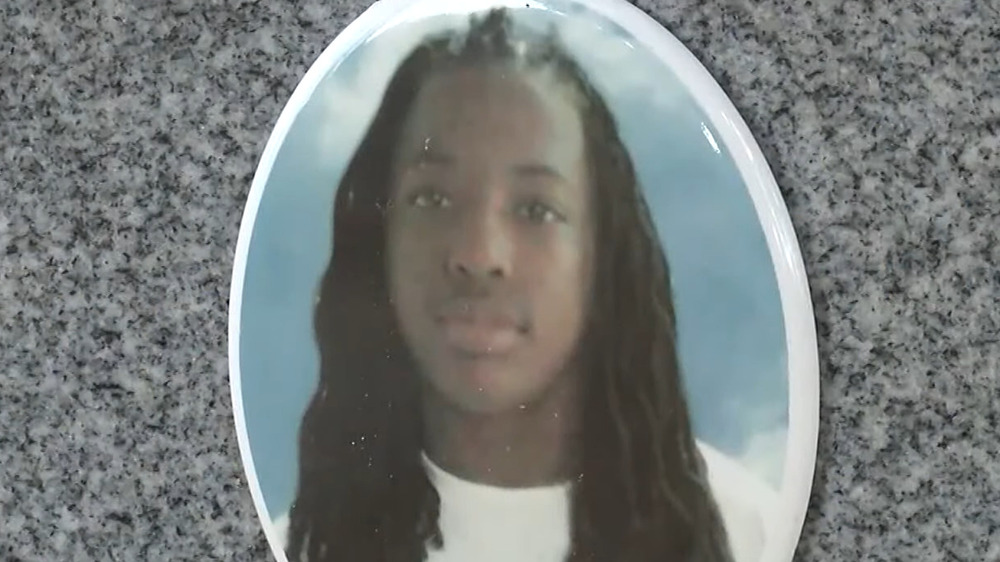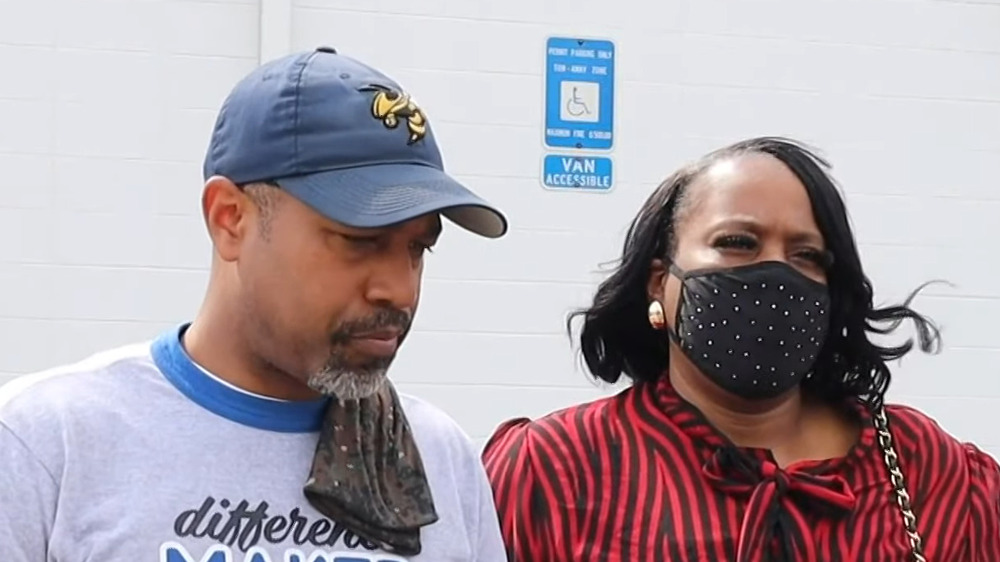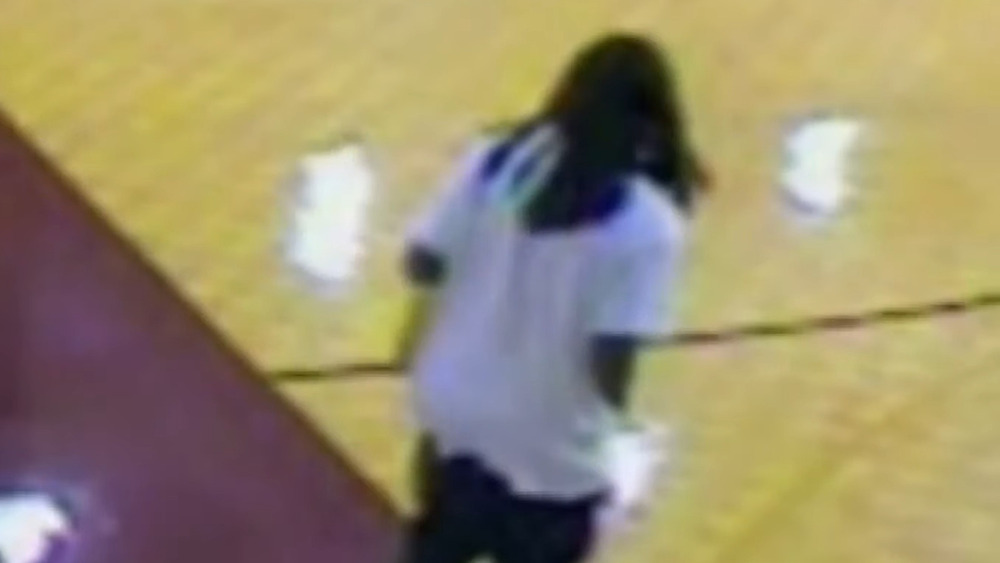The Mysterious Death Of Kendrick Johnson
In March 2021, Lowndes County Sheriff Ashley Paulk announced his office was reopening the investigation into the 2013 death of Georgia high school student Kendrick Johnson. The news was a relief to many who've long believed his death, initially ruled an accident, was something far more troubling.
Experts have performed three autopsies on Johnson's remains, though the cause of death remains contested. There have already been several inquiries, as well as litigation brought forth by Johnson's family, though it seems no one is satisfied with the conclusions that have so far been reached.
This story begins on a normal day at an average high school in southern Georgia, not long after students returned from a holiday break. A videotape from inside the school catches sight of Johnson, as he's seen walking into the gym of Valdosta's Lowndes County High School, where he was a student. It was the last time he would be seen alive.
What we know about the death of Kendrick Johnson
Before going on, it should be noted that, as straightforward as this case may have initially seemed to some, many of the details surrounding Johnson's death are still disputed. For now, let's focus on what facts are generally agreed upon.
According to the journal Workers World, when Johnson didn't return home that night, his mother became concerned and called 911. It wasn't until the following day that Johnson's body was found in extremely unusual circumstances. Johnson was found inside a large, rolled-up gymnasium mat, head down, wearing only socks, his Nikes wedged in beside him. Reportedly, his face was swollen beyond recognition.
Following the discovery, WTXL reports that an initial autopsy found that the 17-year old had died accidentally, the result of suffocating to death inside the rolled mat. It seems an improbable scenario and Johnson's family understandably harbored many doubts. According to UK's The Sun, the family requested three autopsies following the initial investigation, so certain were they that something about their son's death was just not right.
What really happened to Kendrick Johnson
Johnson was the youngest in his family, a baby-faced, multi-sport athlete known by friends as "KJ." Despite what accounts depict as a happy family life, many say that school was a different story. Johnson, who was Black, had reportedly had trouble with another student at the school and though evidence of a hate crime has never been proven, race is a through line throughout the case — from its possible contribution to Johnson's death and on to grievances with the way the case had been handled by local authorities.
The accident finding stems from authorities' supposition that Johnson had been trying to retrieve a shoe when he fell into the rolled-up mat and was unable to free himself. Per NPR, the family requested a second autopsy that found that Johnson showed signs of blunt force trauma to his neck and that the "manner of death was not an accident." Afterward, the Justice Department opened up a three-year investigation into Johnson's death, poring over surveillance footage, interviewing nearly 100 people, and going through emails and texts. In 2016, the team announced their findings: they could not conclusively meet the legal threshold to charge anyone with Johnson's death. But the story doesn't end there.
Rumors and allegations swirl in the aftermath of Kendrick Johnson's death
Despite the new information about blunt force trauma that the second autopsy revealed, it also introduced shocking new evidence: All of Johnson's internal organs, from his midsection to his skull, had been removed and replaced with newspaper, reports Workers World. Baffled? So were Johnson's family and the rest of the Black community in Valdosta. The paper goes on to say that Johnson's organs were "discarded by the prosecutor before the body was sent back to Valdosta." That's just not normal procedure in a case like this.
Things got even messier in 2015 when, per CBS News, Johnson's parents filed a $100 million lawsuit against 38 people, including local officials, and two classmates they allege their son had violent altercations with, as well as the classmates' father, an FBI agent, alleging a coverup of his sons' involvement. A court later dismissed the suit in its entirety. Per the Chicago Tribune, the FBI agent, Richard Bell, also sued Johnson Publishing (publishers of Ebony and Jet) for defamation. Ultimately, the publisher settled for $500,000 but went bankrupt in the process. In 2017, a court ordered that Johnson's family must pay back $300,000 in legal fees stemming from their previous wrongful death suit, says AJC.
Where things stand now in the Kendrick Johnson case
When Sherriff Paulk announced the update in the case last month, he explained that the impetus for reopening the case was finally receiving documents from the federal investigation into Johnsons' death that he'd been requesting since 2019. Despite being turned down at least once, he and the family persisted.
In April of this year, NPR reports that Sherriff Paulk's office had received 17 boxes of federal evidence in the case and that the family is thankful it's once again being looked at. The new investigation is expected to take at least six months, due to the sheer volume of evidence investigators will have to sift through and interviews they will likely have to conduct.
Regardless, Paulk does sound serious about his commitment to the case, noting that his investigation will be the first to benefit from having all evidence in one place. For the Johnsons, who believe their son was struck with a blunt object, some progress will be made if they can get his legal cause of death changed from asphyxiation to blunt force trauma. Ultimately though, it seems they are still waiting on the only thing they've wanted now for nearly a decade — real answers.




